heat death of the universe
description: the idea that the universe will eventually reach a state of entropy from which it cannot recover
55 results
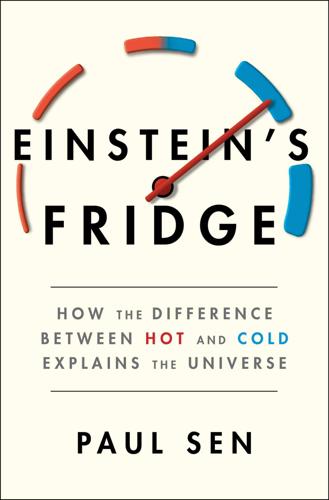
Einstein's Fridge: How the Difference Between Hot and Cold Explains the Universe
by
Paul Sen
Published 16 Mar 2021
In the final publication, he removed the biblical reference but was no less bleak about the future: “Within a finite period of time past, the earth must have been, and within a finite period of time to come, the earth must again be, unfit for the habitation of man as at present constituted.” This idea that the universe will wind down and die as all the heat in it dissipates became known as the heat death of the universe. Thomson’s contemporaries noted the audacity with which he had drawn a grand cosmological conclusion from his everyday observations of a cooling iron bar. As Hermann Helmholtz wrote in 1854, “We must admire the sagacity of Thomson, who in the letters of little known mathematical formulae, which speaks only of the heat, volume, and pressure of bodies, was able to discern consequences which threatened the universe, though certainly after an infinite period of time, with eternal death.”
…
When a wave arrives, that meaning is lost as the sand particles become jumbled and are rearranged into more likely but less meaningful configurations—a high-entropy state. However we choose to record information, the relentless increase of entropy will erase it as surely as a wave wipes away a name drawn in the sand. William Thomson’s prediction of the heat death of the universe includes thoughts, words, and memories. Everything will end up at the same temperature, everything will be forgotten. * * * In July 1948, when Shannon published his paper, no one predicted the scales at which his ideas would be applied. Nor did anyone question whether the similarities between thermodynamic and information entropy are coincidental, or if they are two faces of the same phenomenon.
…
D., 72 Fourier, Joseph, 33–34 France commitment to education in, 8, 34 Say’s spying mission to Britain for, 1–2, 5 steam power in, 5–6, 42, 43 Franklin, Benjamin, 110 free energy cycle of life with, 123 pattern formation in morphogenesis and, 210 photosynthesis with, 121–23, 199 vitalism debate and, 123–24 French flag model, 214 French Revolution, xi, 5, 7–8 Freon, 165 friction, heat generation by, 10 “Further Studies in the Thermal Equilibrium of Gas Molecules” (Boltzmann), 98, 104 Gabor, Dennis, 164 Galileo, 220 Gandy, Robin, 212 gases Bernoulli’s research on temperature changes and, 76–78, 79–80 Buys Ballot’s observations of behavior of, 81 Clausius’s research on behavior of, 78–82, 88 creation moment of universe out of, 128 infrared radiation absorption and, 243 kinetic theory of, 78 Maxwell’s analysis of behavior of, 88–89, 92–93, 187 temperature related to volume of, 65–66 General Conference of Weights and Measures (10th, 1954), 66 general relativity Bekenstein’s research on black holes and, 232–34 Einstein’s thought experiment of falling objects and gravity on, 220–24 Hawking’s research on, 229, 235 Noether’s research on mathematics of, 157, 159 scientific community’s response to Einstein’s paper on, 224, 225 general theory of relativity, and black holes, 219–20, 222–24, 225 genes, 199, 206, 216 Germany departure of Jewish academics from, 165, 166, 172 Einstein-Szilard refrigerator in, 163–64 encryption in World War II and, 173–74, 199–200, 203 Nazism in, 165–66, 193, 202 Noether’s struggles as female professor in, 155, 159, 165–66 phenomenalism in, 124–25 physics education in, 242 rise of fascism in, 165–66 science seminars in, 51–52 steam technology in, 43 Gibbs, Josiah Willard, 104–9, 117–24 atomic and molecular hypothesis and, 131 background and education of, 95–96, 104–6 chemical reactions and laws of thermodynamics studied by, 118–23 consequences of the laws of thermodynamics studied by, 96, 104, 105, 106, 125 entropy and, 106, 108, 109, 117–21, 230 formula for calculating entropy of, 180 Helmholtz and, 106, 123–24 scientific community’s reaction to papers of, 112–13, 124, 125 thermodynamic maps used by, 106–8, 118 vitalism debate and, 123–24 Gibbs, Josiah Willard Sr., 104–5, 106 Gibbs free energy cycle of life with, 123 photosynthesis with, 121–23 vitalism debate and, 123–24 Gibbs’s law, 118–20 glaciers, movement of, 39 Glasgow, Thomson family in, 59 Glasgow University, 33, 34, 35–36 Goldschmidt, Rudolf, 162 Google, 167 grand unified theory, 236 gravity anthropic principle and, 129 Einstein’s thought experiment on general relativity and, 220–22, 224, 225 Newton’s theory of, 86, 156, 220, 221–22, 225 Green, Jeremy, 206, 216 Greenbaum, Franz, 213–14 greenhouse gases, 243–44 Grossmann, Marcel, 144 Harrison, James, 110 Hawking, Stephen, xi background and education of, 229 Bekenstein’s paper on black hole entropy and, 234, 236 black hole research of, 229–30, 235–36, 237 event horizons and, 234 on understanding the universe, 240 Hawking radiation, 235, 236 hearing aid, Einstein’s invention of, 162 Hearst, Phoebe, 131 heat black holes and, 230, 232, 234, 235–36 caloric theory of, in early nineteenth century, 9–10 Carnot’s Reflections on, 11–12, 21, 33 Carnot’s research on, 9–10, 40, 52, 73 chemical processes in animal release of, 46 Clément’s approach to quantifying, 10–11 Fourier’s research on behavior of, 33–34 Helmholtz’s research on animal generation of, 44–46 Joule’s quantification of unit of work in, 27–28 Joule’s research on electricity as a source of, 24–29 respiration and release of, 44–45 thermodynamic maps on changes in, 106–9 Thompson’s absolute temperature scale measuring, 63–66, 88–89 Thompson’s paper on friction as source of, 10 transistor use and generation of, 184–85, 195, 196 heat death of the universe, 60–61, 127, 183 heat dissipation Boltzmann’s research on, 102–3, 116–17 Clausius’s research on, 66–67, 75 entropy increases related to, 68–69 information erasure and, 195–96 Thomson’s analysis of the age of the earth related to, 71–72 Thompson’s paper on, 59–61 Turing’s morphogens and, 206 heat flow Carnot’s theory of an ideal engine using, 15–19, 73, 247–52 Planck’s research on, 133–34, 137–38 three ways of, 133–34 heating systems, thermostat in, 207 Heisenberg, Werner, 160 Helmholtz, Hermann, xi, 43–49 background and education of, 42, 43–44 Boltzmann’s visit to, 104 Clausius’s study of works of, 52 Gibbs’s work and, 106, 123–24 heat generation by animals and, 44–46 “On the Conservation of ‘Kraft’ ” by, 47–49, 51–52, 154 potential energy concept of, 48, 52 scientific community’s response to work of, 49, 51–52 Thomson’s view of the universe and, 61 vitalism research of, 43–46, 123–24 Herschel, John, 86 Hilbert, David, 156–57, 158, 159, 166, 201 Hydrodynamica (Bernoulli), 77 IBM Research Laboratory, 192–94 ice harvesting, 110 ideal heat engine concept Carnot’s theory of motive power of steam engines using, 15–19, 195, 247–52 Clausius’s thought experiment on conservation of energy using, 55–58, 253 as perpetual motion machine, 18, 46 Thomson’s temperature measurement using, 65–66 “Illustrations of the Dynamical Theory of Gases” (Maxwell), 89 Imperial Physical Technical Institute, 138 Industrial Revolution, xi, 96, 110, 243 inertia, in laws of mechanics, 158 information change in the physical universe when using, 183 importance of digital processing of, 185 letter-frequency patterns in, 177–79 letter-pair patterns in, 179 link between thermodynamics and, 167–68, 183 Shannon’s ideas on, 174–80, 183 spoken word statistical patterns in, 180 Szilard’s thought experiment (demon) on thermodynamics and, 192 thermodynamic cost of, 192, 194–97 transistor invention and, 183–85 information age, energy enabling, 167–68 information entropy, 180, 182, 183 information processing E. coli example of, 197 Landauer and Bennett’s search for laws governing, 192–93 thermodynamic cost of a bit in, 192, 194–97 information theory, 237 entropy of everything in a black hole and, 237–38 expansion of universe and, 238–39 infrared radiation, 136 heat transfer by radiation and, 134 kiln heat and generation of, 136–37 Planck’s equations on amount of, 138, 141 solar generation of, 137, 243 temperature and emission of, 136 Tyndall’s research on atmospheric behavior of, 243–44 Institute for Advanced Study, 172, 230, 231 intelligence, and computers, Turing’s paper on, 204–5 internal combustion engines, 20 invariance Noether’s research in, 156, 157 symmetry and, 157 Jastrow, Ignaz, 166 Jewish academics, migration of, 165, 166, 172, 193 Jewish refugee children, Turing’s work with, 202 Joule, James, xi, 23–31 background and education of, 23–24 Carnot’s heat theory and, 24, 40 Clausius’s study of works of, 52, 58, 256 Helmholtz’s work and, 49 paddle-wheel dynamo experiment of, 29–30 research on electricity as a source of heat by, 24–29, 154 scientific community’s reaction to work of, 25, 28–29, 30–31, 49 thermodynamics research and, 106, 187 thermometers for temperature measurement used by, 29–30 Thomson’s critiques of research of, 30–31, 36, 37, 58 Thomson’s ice experiment on freezing water and, 39–40 “Journey of a German Professor to Eldorado” (Boltzmann), 131 Kelvin, Lord.

More Everything Forever: AI Overlords, Space Empires, and Silicon Valley's Crusade to Control the Fate of Humanity
by
Adam Becker
Published 14 Jun 2025
That’s ten million billion trillion trillion people, a one with forty zeroes after it.21 And this all presumes that our descendants remain human, with our bodies and brains of flesh. If we find a way to transfer human minds into computers, or our primary descendants are themselves conscious AIs, there could be a future filled with unnumbered myriads of electronic life, their silicon circuitry silently traversing the intergalactic voids until the heat death of the universe. For MacAskill, it’s literally the more the merrier. As long as our descendants’ happiness outweighs their misery, his logic demands that the greater their numbers, the better the future is. He argues that we should be aiming for the most maximalist of these futures, as best we can. “The future of civilization could be literally astronomical in scale, and if we will achieve a thriving, flourishing society, then it would be of enormous importance to make it so.”22 Yet there are so many things that seem unlikely or impossible in these futuristic visions of the final frontier.
…
Their remnants will decay or be consumed by black holes, and then those black holes, too, will die, evaporating into radiation, fading into the long night. Ultimately, all that will remain is this radiation, mixed with ghostly echoes of the original cosmic background, stretched ever thinner by the relentlessly accelerating expansion of space, eating away at what little energy remains in the echoes of the Big Bang. This is the heat death of the universe—the final death of all differences in temperature, of all differences of any kind, as dictated by the most unbreakable law of physics there is: the second law of thermodynamics, which states that entropy must always increase in a closed system like our universe. Entropy is often explained as a measure of disorder, but on these cosmic timescales, entropy can be thought of as a measure of sameness—if there’s a difference between two places in the universe, increasing entropy will smooth it out over time until they’re identical, equally filled with equally random stuff at equal temperature.
…
None of these possibilities have been ruled out. But heat death against a background of endless, accelerating expansion is widely regarded as the most likely fate for the universe by modern cosmologists—with a possible coda of vacuum decay in the deep future, well after the heat death has imposed its relentless sameness across the universe. How should we feel about this? In the face of the death of all things, what do we do? How should we live? I don’t know. We know, abstractly, that we will die. The end of humanity is even more abstract. To fathom the end of the stars themselves seems beyond our grasp.

Global Catastrophic Risks
by
Nick Bostrom
and
Milan M. Cirkovic
Published 2 Jul 2008
Since the advent of the Nuclear Age, one apocalyptic threat after another, natural and man-made, has been added to the menu of ways that human history could end, from environmental destruction and weapons of mass destruction, to plague and asteroid strikes (Halpern, 2001; Leslie, 1998; Rees, 2004). In a sense, long-term apocalypticism is also now the dominant scientific worldview, insofar as most scientists see no possibility for intelligent life to continue after the Heat Death of the Universe (2002, Ellis; see also the Chapter 2 in this volume) . Millennia/ tendencies in responses to apocalyptic threats 79 4.5 Contemporary techno-millennialism 4. 5 . 1 The s i n gu l a rity a n d tech n o - m i llen n ia l i s m Joel Garreau's (2006) recent book on the psychoculture of accelerating change, Radical Evolution: The Promise and Peril of Enhancing Our Minds, Our Bodies - and What It Means to Be Human, is structured in three parts: Heaven, Hell and Prevail.
…
Preparing to prepare: Other drastic changes and challenges must be anticipated, even if we forego daring leaps. Such changes and challenges include exhaustion of energy supplies, possible asteroid or cometary impacts, orbital evolution and precessional instability of Earth, evolution of the Sun, and - in the very long run - some form of'heat death ofthe universe'. Many of these are long-term problems, but tough ones that, if neglected, will only loom larger. So we should prepare, or at least prepare to prepare, well in advance of crises. Wondering: Catastrophes might leave a mark on cosmic evolution, in both the physical and (exo)biological senses.
…
Possible responses include moving (underground, underwater, Big troubles, imagined and real 359 or into space) , re-engineering our physiology to be more tolerant (either through bio-engineering, or through man-machine hybridization), or some combination thereof. Heat death: Over still longer time scales, some version of the 'heat death of the universe' seems inevitable. This exotic catastrophe is the ultimate challenge facing the mind in the universe. Stars will burn out, the material for making new ones will be exhausted, the universe will continue to expand - it now appears, at an accelerating rate and, in general, useful energy will become a scarce commodity.

To Sleep in a Sea of Stars
by
Christopher Paolini
Published 14 Sep 2020
And they did. Jorrus said, “The meaning of life—” “—differs from person to person,” said Veera. “For us it is simple. It is the pursuit of understanding, that we—” “—may find a way to contravene the heat death of the universe. For you—” “—we cannot say.” “I was afraid of that,” Kira said. Then, because she couldn’t help herself: “You take as fact a lot of things others would dispute. The heat death of the universe, for example.” Together they spoke: “If we are wrong, we are wrong, but our quest is a worthy one. Even if our belief is misplaced—” “—our success would benefit all,” said Jorrus. Kira inclined her head.
…
If the Entropists figured out that the Soft Blade was alien tech, they weren’t likely to report her to the UMC, just pepper her with an endless series of questions. Kira remembered what her then research boss, Zubarev, had told her during their time on Serris: “If you ever get in a chin-wag with an Entropist, you’re best served not talking about the heat death of the universe, yah hear me? You’ll never get free after that. They’ll chew your ear off for half a day or more, so yah know. Just warning you, Navárez.” With that in mind, Kira stopped in front of the man and woman. “Excuse me,” she said. She felt as if she were seven again, when she’d been introduced to the Entropist who had visited Weyland.
…
Originated as a statement of intent, later expanded to a philosophical treatise containing a summary of all known scientific knowledge, with primary emphasis on astronomy, physics, and mathematics. (See also Entropism.) ENTROPISM: stateless, pseudo-religion driven by a belief in the heat death of the universe and a desire to escape or postpone said death. Founded by mathematician Jalal Sunyaev-Zel’dovich in the mid-twenty-first century. Entropists devote considerable resources to scientific research and have contributed—directly or indirectly—to numerous important discoveries. Open adherents are noted for their gradient robes.
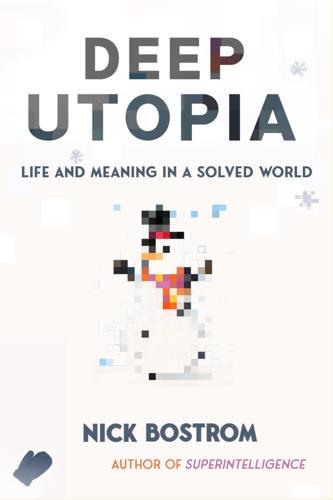
Deep Utopia: Life and Meaning in a Solved World
by
Nick Bostrom
Published 26 Mar 2024
If, however, we measure the size of the economy by a more natural standard—either by reference to typical human preferences or by reference to the economy’s ability to produce bundles of familiar types of goods and services—then there does seem to be a finite limit to growth. In reality, this point will never actually be reached; but if we are lucky, we might achieve a series of decreasingly imperfect approximations, culminating in a plateau, which might last for a long time, before the heat death of the universe, if nothing else, eventually puts a stop to the proceedings. In principle, our civilization might last for billions of years (and yet, to an immortal—a sandcastle built in the afternoon and swept away by the evening tide). If we wanted to pursue this line of investigation further, we could ask, for example, how many computational operations could be performed with these physical resources that an Earth-originating civilization could reach and mold over the lifetime of the universe, or how many bits could be stored and erased using these resources.
…
In particular, this involves the assumption that the relevant parts of our current physical theories are correct (concerning the speed of light, the thermodynamics of computation, the positive cosmological constant, etc.), which is maybe not so implausible if we are living in the basement universe—but is totally up for grabs if we are living in a simulation. If we are in a simulation, it might be set to terminate long before the heat death of the simulated universe; and what appears to us to be distant stars and galaxies might simply be realistically rendered illusions, but without any actual “there” there. Another important premiss is that all this stuff is ours to claim. One obvious way in which this could fail to be true is if aliens already occupy much of the astronomical petri dish, or if they will have done so by the time we get our act together and our probes arrive at the various destinations.51 Another way that this premiss could fail to be true is if others, while not in physical possession, have legitimate moral claim or legal title to much or all of this stuff.
…
For example, if you have 100,000 hairs on your head, consider all the possible different braids you could make: I mean if we count as different any two braids that are composed of non-identical sets of hairs, or that have some difference in the precise pattern of intertwinement. Thanks to the power of combinatorics, even somebody like me, who has a much smaller number of hairs left, could form enough different braids to last me far beyond the heat death of the universe even if I made a new one every minute. There are even quite a large number of different ways of tying a simple necktie. One of my colleagues—the one whom I’ve never seen bored— has co-authored an article in this field, calculating that there are 266,682 distinct tie knots.163 If we assume that you get a new tie each Father’s Day, you could do up each one a different way for a quarter million years.

Super Thinking: The Big Book of Mental Models
by
Gabriel Weinberg
and
Lauren McCann
Published 17 Jun 2019
The natural increase of entropy over time in a closed system is known as the second law of thermodynamics. Thermodynamics is the study of heat. If you consider our universe as the biggest closed system, this law leads to a plausible end state of our universe as a homogenous gas, evenly distributed everywhere, commonly known as the heat death of the universe. On a more practical level, the second law serves as a reminder that orderliness needs to be maintained, lest it be slowly chipped away by disorder. This natural progression is based on the reality that most orderliness doesn’t happen naturally. Broken eggs don’t spontaneously mend themselves.
…
Anders, 260, 261 error bars, 155, 156 escalation of commitment, 91 escape hatch, 244 Ethernet, 118 Etsy, 119 European Union, 59 evolution, 99–100, 133 execution, 292 exercise, 85, 87, 88, 102, 111, 113, 130 exit: barriers to, 305 strategy for, 242–43 expectations, 267–68 experimenter bias (observer-expectancy bias), 136, 139 experiments, 135–36, 161–63, 173 A/B testing, 136 alpha in, 161, 182 beta in, 162, 182 blinded, 136 endpoints in, 137 power of, 162 randomized controlled, 136 replication of, 168–72 sample size in, 143, 160, 162, 163, 165–68, 172, 182 thought, 199–201 see also polls and surveys; research expected value, 186–89 expertise, 109, 115, 269 deliberate practice and, 260–62, 264, 266 externalities, 41–42, 47 negative, 41–43, 47 extroverts, 249–50 Facebook, 18, 36, 94, 119, 219, 233, 247, 305, 308 failure, 296 cascading, 120, 192 focus on, 268–69 government, 47, 48 market, 47–49 political, 47 fairness, 224 fair share versus fair play, 224–25 fake news, 233 fallacies: base rate, 157, 158, 170 black-and-white, 126–28, 168, 272 conjunction, 9–10 gambler’s, 144, 145 inverse, 156–57 Texas sharpshooter, 136 false negative, 160–63, 165–67 false positive, 160–62, 164–66, 168–70, 172 false sense of security, 44 false urgency, 74 fast (low-concentration) thinking, 30, 70–71 fat-tailed distributions, 191 favors, 215 fax machine, 106, 107, 119 FBI, 97 fear, uncertainty, and doubt (FUD), 225 fear of missing out (FOMO), 219 feedback, 262–64, 266, 294, 316 feedback loops, 192, 294 Ferriss, Tim, 220 Feynman, Richard, 32–33, 315–16 filter bubble, 17–18 financial advisers, 44, 45 financial crisis of 2007/2008, 79, 120, 192, 271, 288 fines and sanctions, 232 First, do no harm, 59 first impressions, 14, 146 first-mover advantage or disadvantage, 292 first principles, arguing from, 4–7, 31, 207 FiveThirtyEight, 172 5 Whys, 32, 33 fixed mindset, 266–67, 272 flow, 192 flu vaccine, 133–35 flypaper theory, 234 flywheel, 108–10, 112, 283 Food and Drug Administration, U.S., 283 football, 226, 243 foot-in-the-door technique, 216 Forbes, 220 forcing function, 113, 244 forecasts, see predictions and forecasts Fortune 100 companies, 122 Foundation, 5 401(k) programs, 87–88 foxes versus hedgehogs, 254–55 frame of reference, 11, 18, 90, 250 framing, 11–13, 30, 221, 222, 224, 226 Franklin, Benjamin, 92 fraud, 228 Freakonomics (Levitt and Dubner), 44–45 free rider problem, 39–40, 43, 49 frequentist statistics, 158–60 Frisch, Otto, 114–15, 120 frog, boiling, 55, 56, 58, 60 FUD (fear, uncertainty, and doubt), 225 fundamental attribution error, 20–21, 23 future, 289 discounting of, 85–87 predicting, see predictions and forecasts uncertainty in, 2, 132, 173, 180, 182, 185 Gallup, Inc., 16 Galton, Francis, 203 gambler’s fallacy, 144, 145 games, iterated, 214 game theory, 212–14, 230, 234, 238, 244 prisoner’s dilemma, 212–14, 226, 234–35, 244 garbage, 40–41 garbage in, garbage out, 185 Gates, Bill, 69, 128, 141 gateway drug theory, 236 Gelman, Andrew, 173 generalists, 252–53 generals always fight the last war, 240 genes, 156–57, 191, 249–50 George III, King, 221 Germany, 70, 145, 229, 237–39 germ theory, 26, 289 get on the same page, 225 get them up to speed, 279 getting more bang for your buck, 79 Getting Things Done (Allen), 76 Gibson, William, 289 Gilbert, Daniel, 27 Ginóbili, Manu, 247 give-and-take, 128 Gladwell, Malcolm, 261 GlaxoSmithKline, 63, 81, 257 globalization, 310 global optimum, 195–96 goals, 69, 87–89, 122, 242, 244 Gödel, Escher, Bach (Hofstadter), 89 Goldblum, Jeff, 121 golem effect, 267 Gondwanian bridges, 25 good cop, bad cop, 232 good enough, 90 Goodhart, Charles, 49 Goodhart’s law, 49, 51, 52, 54 Good Judgment Project, 206 Good to Great (Collins), 109, 254 Google, 18, 53, 104, 231, 305 Gordon, Peter, x Gosplan, 49 government, federal: budget of, 75–76 failure in, 47, 48 regulatory action by, 183–84, 231–32 graffiti, 40 Graham, Paul, 71, 277 grass-is-greener mentality, 176–77, 258 graphs, 146–48 bell curves in, 150–52, 153, 163–66, 191 error bars in, 155, 156 histograms, 147–48, 150 gravity, center of, 112 gray thinking, 28 group membership, 127 groupthink, 201–3 Grove, Andy, 308 growth mindset, 266–67 Guardian, x guerrilla marketing, 240 guerrilla warfare, 239, 241–42 gun control, 235, 237 Gurley, Bill, 286 gut feeling, 30 hackers, 97 Hail Mary pass, 243–44 hammer, Maslow’s, xi, 177, 255, 297, 317 Hanlon’s razor, 20 harassment, 53 Harvard Business Review, 297 Hatchimals, 281, 284 hazard, 43–45, 47 head in the sand, 55 Health and Human Services, U.S. Department of, 48 healthcare, 41, 54–55 HealthCare.gov, 107 insurance, 42, 46, 47, 190 spending on, 80, 81 health information, 53 heart rhythms, 139 heat death of the universe, 124 heat-seeking missiles, 301 hedgehogs versus foxes, 254–55 Heen, Sheila, 19 Heifer International, 109 height, 150–51, 156, 191–92 Heilbroner, Robert, 49 helplessness, learned, 22–23 Heraclea, Battle of, 239 herd immunity, 39–40, 46 heroin, 36 heuristic, 94 Hick, William, 62 Hick’s law, 62, 63 hierarchical versus egalitarian, in organizational culture, 274 hierarchy of needs, 270–71 high-context communication, 273–74 high-leverage activities, 79–81, 83, 107, 113 hindsight bias, 271–72 hiring, 258 histogram, 147–48, 150 Hitler, Adolf, 237 HIV, 233 Hoffman, Reid, 7 Hofstadter, Douglas, 89 Hofstadter’s law, 89 hold the line, 236 hollow victory, 239 home: being locked into housing situation, 305 insurance on, 156 new-construction, 228 purchase of, 79, 178 repairs on, 56, 185–89 security services for, 229 Homebrew Computer Club, 289 Homeland Security, U.S.
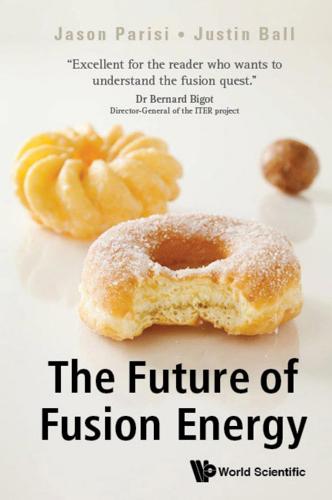
The Future of Fusion Energy
by
Jason Parisi
and
Justin Ball
Published 18 Dec 2018
Index A agriculturalists energy sources, 4 air conditioners, 12 Al-Qaeda, 308 Alcator C-Mod, 231, 280, 301, 361 Alpha Centauri, 348 aneutronic see p-B, 292 ARC, 248 Argentina see Ronald, 179 Arkhipov, Vasili, 305 arsenals by country nuclear weapons, 304 ASDEX-U, 129, 193, 277 Aston, Francis, 177 atmospheric pollution, 238 B B-59 submarine, 305 bald spot, 103 banana orbits see super-bananas, 118, 190 baseload sources, 46 bell curve, 39, 83 Bell Telephone Laboratory, 184 Beria, Lavrenti, 189 beryllium, 162, 224, 324 Bethe, Hans, 178 Big Bang, 12 binding energy, 70–71 biomass, 35 Boeing 747 airplane, 353 Boltzmann constant, 69 bootstrap current, 189 bootstrap multiplication see bootstrap current, 254 brains, 59 bravery, 59, 335 brawn, 59 breakeven, 135 Breakthrough Starshot, 353 breeder reactors, 26, 330 fuelling proliferation, 333 bremsstrahlung see p-B, 293 burning plasma see ignition, breakeven, triple product, Lawson criteria, 136, 214 C C-2U, 278 Californium, 316 CANDU reactors, 327 capital cost, 240 carbon capture and storage, 39 Carnot limit, 31 catalyzed D–D fuel cycle, 85, 355 central solenoid, 145, 283 chain reaction, 314 chemical propulsion, 352 Chernobyl, 24 Chicago Pile-1, 311 classical transport, 123 climate change, 238–239 CNO cycle see stars, Bethe, Hans, 178 cold fusion, 77 Commonwealth Fusion Systems, 301 confinement, 82 electrostatic, 112 empirical scaling laws, 251 energy confinement time, 90 toroidal magnetic, 109 volume to surface area ratio argument, 256 conservation of momentum, 349 frozen lake argument, 350 convective eddies, 32 conventional spacecraft, 350 Coriolis force, 32 cost of electricity, 239 critical mass, 315 cross-section, 77–78 Cuban Missile Crisis, 304 current drive, 144 electron cyclotron, 152 electromagnetic wave, 150 inductive, 145 neutral beam, 148 cusp geometry see Lockheed Martin, 288 D D–3He fusion, 85, 300, 354 D–D fusion, 20, 85, 202, 301, 354 D–T fusion, 20, 83, 161, 202, 269, 281, 287, 292, 337 Darwin, Charles, 175 Debye length, 99 dense plasma focus see Lawrenceville plasma physics, 297 deuterium abundance on Earth, 22 diagnostics, 164–165 diffusion see random walk diffusion, 123 DIII-D, 277 direct drive see indirect drive, inertial confinement fusion, 272 dirty bombs, 321 dispatchable sources, 46 disruptions, 153–154, 222, 244, 267 mitigating, 155 divertor, 157, 194, 220, 256 double-edged sword nuclear energy as blueprint, 345 nuclear physics, 310 technologies, 311 E early hominids, 3 Earth–Moon system, 16, 41 Eddington, Arthur, 178 edge localized modes see ELMs, 194 Edison, Thomas, 6 electric field, 94, 150 electromagnetic force, 74 electromagnetic induction, 5, 12 electromagnetic repulsion, 67 electromagnetic waves, 269 electromagnetism, 90 electromagnets, 93 electrons, 65 in light bulbs, 6 electrostatic, 95 ELMs, 194, 222 ELMO bumpy torus, 114 empirical scaling law, 130, 251 enrichment, 333 energy conservation of, 11 flows of, 13 energy hierarchy, 58 energy storage, 50 Enola Gay, 305 entropy, 11 EPED, 197 exhaust velocity, 350 expanding electrical grids, 54 external power, 249 F Faraday, Michael, 5 Fat Man, 305 fissiled percent, 322 fertile material, 330 field-reversed configuration, 290 first wall, 153, 222 fission proliferation, 333 fission reactors, 325 climate versus nuclear security tradeoff, 335 fission–fusion hybrids, 332 flow, 197, 245 Fokker–Planck simulations see gyrokinetics, 209 formation of fossil fuels, 37 Forrest, Michael, 188–189 fossil fuels, 37 Fukushima, 24 fusion, 13, 16, 19 enrichment in fusion blanket, 337 proliferation, 336 fusion fuels, 83 fusion power density, 243 fusion reactor design, 237 disabling a proliferator, 338 small fusion system, 339 smallest planned, 159 timescale for blanket proliferation ramp-up, 340 fusion thruster, 354 G gas centrifuges, 318 gaseous diffusion, 317 General Atomics, 198, 279 General Fusion, 284 geopolitics, 343 geothermal, 16, 27 global zero, 343 gravitational confinement, 89 gravity, 13, 89 gravity-assist, 351 Greenwald limit, 251 gun-type bomb, 323 gyrokinetic simulations, 252 gyrokinetics, 206, 252 scale separation, 207 gyroradius, 92 H H-mode, 130, 193, 206, 252 hairy ball theorem, 103 Halite-Centurion, 274 half-life, 20 Harwell, 187 heat death of the Universe, 12 heat flux, 221 heating, 14, 218 electron cyclotron, 152 ion cyclotron, 152 heavy element synthesis, 15 heavy elements, 16 heavy water reactors, 327 Heisenberg’s Uncertainty Principle, 79 Helion Energy, 300 heliotron, 114 helium-3 abundance, 354 hex, 317 Hiroshima, 322, 336 hohlraum see inertial confinement fusion, 272 hydroelectric, 39 hydrogen bomb, 89, 304, 324 hydropower, 17 I IAEA, 334, 339 ignition, 131, 250, 269 MCF and ICF ignition differences, 274 implosion bomb, 323 inboard see torus terminology, 110 indirect drive see direct drive, inertial confinement fusion, 272 inductive heating, 147 Industrial Revolution, 4 inertial confinement fusion, 269 weaponization propspects, 271 intercontinental ballistic missiles see ICBM, 309 intercontinental electrical grids, 55 Intergovernmental Panel on Climate Change, 9 internal transport barriers see pedestal, 196 intermittency, 30, 46 INTOR, 225 IPA, 278 Iron Curtain, 181 isotopes, 20, 73 isotope effect, 204 isotopic semantics, 73 ITER, 137, 203, 211, 237, 248, 257, 273, 302, 353, 361 ignition, 214 Q, 213 strategy, 216 Ivy Mike, 304 J JET, 140, 155, 169, 198, 200, 260, 273, 277 jet engine, 349 JT-60, 260 JT-60SA, 140, 169, 361 JT-60U, 140, 277, 361 Juno spacecraft, 347 K K-DEMO, 361 Kelvin, Lord, 177 Khrushchev, Nikita, 187 kink limit, 246 Kremlin, 186 Kurchatov, Igor, 188 Kurchatov Institute, 185 L L-mode, 193, 252 Lamb, Horace, 127 Landau energy levels, 298 Landau damping, 151 Landau, Lev, 151 Langmuir, Irving, 165 Langmuir probes, 165 laser enrichment, 320 lattice structure, 156 Lavrentyev, Oleg, 186 Lawrenceville Plasma Physics, 296 Lawson criterion see triple product, 131, 324 Lawson, John, 131 levitated dipole, 114 limiter see divertor, 157, 194 linear magnetic, 100 lithium, 21, 242 lithium pebbles, 163 lithium-6, 84, 161 lithium-7, 161 lithium-ion batteries, 22, 51 Little Boy fissiled percent, 322 Lockheed Martin, 287 Lufthansa Flight 181, 199 M magnet(s), 139 permanent, 93 magnetic confinement fusion, 247 magnetic field, 91, 150, 247 magnetic islands, 117, 265 magnetic mirror, 100, 355 magnetic surfaces, 114, 144, 158, 191, 265 open versus closed, 158 magnetized target fusion see MTF, 284 magnetohydrodynamics see MHD, 121 Manhattan Project, 318 Mars, 347 mass–energy equivalence, 77 material survivability, 255 matter–antimatter annihilation, 352 mechanical stress, 142, 283 Mercury, 181 Mercury laser see NIF, 276 messy engineering endeavor, 259 MHD, 209, 246 MHD stability, 153 mini-golf, 68 Mini-Sphere, 278 MIT, 301 Model C stellarator, 189 moderator, 326 Moore’s Law see triple product, 136, 205 MRI machines, 140 MTF, 284, 300 Munich, 199 N Nagasaki, 305, 322 neoclassical transport, 126, 265 net electric power, 241–242 net electricity, 169 neutral beam, 220 negative ion acceleration, 220 neutral beams, 291 efficiency, 149 neutron capture cross-section, 331 neutron flux, 156 neutron multiplication, 224 neutron multiplication factor, 162 neutron multipliers, 162 neutron shielding, 292 New York Times, 180 NIF, 273, 336 niobium–titanium, 184 niobium–tin, 184, 248 Nixon, Richard, 224 Nobel Peace Prize, 186 Nobel Prize, 183 non-inductive see current drive; neutral beam, 149 non-renewable, 19 North Korea, 339 nucleons, 65 nuclear energy transition, 341 nuclear fission, 16, 23 nuclear proliferation, 238, 359 nuclear potential, 66 nuclear security, 336 nuclear weapon, 303 boosted implosion bomb, 323 defenses, 309 gun-type bomb, 322 hydrogen bomb, 323 implosion bomb, 322 inspectors, 340 neutron initiator, 324 proliferation with increased tritium availability, 342 significant quantity, 334 tamper, 322 Teller–Ulam design, 325 weapon designs, 321 yield, 303 nuclear winter, 308 O ocean waves, 44 Onnes, Heike, 181 outboard see torus terminology, 110 Oxford, 199 P p-B fusion, 290 particle drifts, 104 E × B drift, 106, 128 B drift, 106, 194 curvature drift, 106 Pauli exclusion principle, 183 pedestal, 193 Pelamis, 46 Perhapsatron, 114, 181, 285 photosynthesis, 35 plasma, 86 plasma current, 114, 264 maximization, 246 plasma flow, 197, 245 plasma gain, 169 plasma heating, 144 plasma power engineering multiplication factor, 170 plasma power multiplication factor, 135 plasma pressure, 244 plasma shaping, 198 Pluto, 321, 347 plutonium, 90 plutonium-239, 25 production, 320 reactor-grade, 329 weapons-grade, 321 poloidal field coils, 144 poloidal see torus terminology, 110 polonium-210, 162 power multiplication, 170 Princeton, 189, 198 Princeton University, 180 profits, 238 proliferation, 333 propellant, 349 proton–proton chain see CNO cycle, stars, Bethe, Hans, 179 proton–proton fusion, 28 public relations, 359 pure fission weapons, 325 Q quasineutrality, 97–98, 150 R radioactive waste, 167 random walk diffusion, 123 rate of energy consumption, 18 Rayleigh–Taylor instability, 271, 285 remote maintenance system, 204 renewable, 19, 57 resistivity, 141 Richter, Ronald, 179, 187 right-hand rule, 93 robotic maintenance, 169, 257 rocket equation, 351 role model effect of fusion technology, 344 S safety factor, 115 Sakharov, Andrei, 186 Saturn, 347 scattering collision, 67 scientific notation, 26 seasonal energy storage, 52 Seebeck effect, 6 seeds, 35 shaping, 198 D-shape, 198 shattered pellet injection see disruptions, 156 significant quantity, 340 solar, 16, 28 Solar System, 17, 348 energy flows, 15 space capsules see divertor, 160 space colonization, 349 SPARC, 301 spent fuel current world production, 334 spherical tokamaks, 281 spheromak, 114, 287 Spitzer, Lyman, 113, 180, 263 ST40, 278 Stalin, Joseph, 187 stars, 175 possible fusion reactions, 178 red giant phase, 15 steam engine, 4 steam turbine, 6 stellarator(s), 114, 263 ignited, 267 stochastic regions, 117, 265 strong nuclear force, 66 Sun, 347 lifetime of, 176 super-bananas see banana orbits, 118 super-duper H-mode, 259 supercomputers, 204 superconductivity, 141, 181, 248 Cooper pairs, 183 type I, 184 type II, 184 superconductor, 283 high-temperature, 185, 283, 301 REBCO, 186 materials, 182 problem with neutrons, 163 supernovae, 14–15 surface-to-air missiles, 309 Sword of Damocles, 306 Symmetric Tokamak, 189 T T-1, 188 T-3, 113, 189, 263, 278 T-7, 185 T4, 278 TAE Technologies, 280, 290 Tamm, Igor, 186 TCV, 201, 280 technetium, 24 temperature, 83 TFTR, 203, 277 tritium detection, 339 thermal equilibrium, 82 thermodynamic efficiency, 31 thermonuclear bomb see nuclear weapons — hydrogen bomb, 324 thermotron, 180 Thor, 110 Thomson scattering, 166 thorium, 321 Three Mile Island, 24 tidal, 16, 41 TNT, 304 toast making of, 7 tokamak, 113 Tokamak Energy Ltd., 281 Tore Supra, 141 toroidal torus terminology, 110 toroidal field, 140 toroidal field coils, 198 toroidal symmetry, 264 torsatron, 114 torus, 104 torus terminology, 110 trapped particles, 118 TRIAM-1M, 185 Trinity, 303, 344 triple product, 135, 267 tritium, 20, 161, 338 cost, 202 current reserves, 341 detecting use in fusion reactor, 339 increased availability proliferation risk, 342 tritium breeding, 215 tritium breeding blanket, 160, 247 Troyon limit, 243, 282 game of chicken, 244 violation, 245 Tsar Bomba, 304 Tuck, James, 181 tungsten, 224 turbulence, 206, 255 turbulent eddy, 128, 197 turbulent transport, 126 U U.S.S.
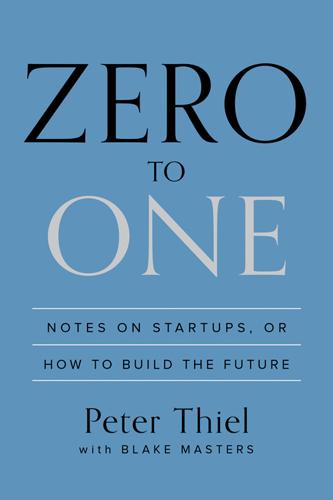
Zero to One: Notes on Startups, or How to Build the Future
by
Peter Thiel
and
Blake Masters
Published 15 Sep 2014
Their theories describe an equilibrium state of perfect competition because that’s what’s easy to model, not because it represents the best of business. But it’s worth recalling that the long-run equilibrium predicted by 19th-century physics was a state in which all energy is evenly distributed and everything comes to rest—also known as the heat death of the universe. Whatever your views on thermodynamics, it’s a powerful metaphor: in business, equilibrium means stasis, and stasis means death. If your industry is in a competitive equilibrium, the death of your business won’t matter to the world; some other undifferentiated competitor will always be ready to take your place.
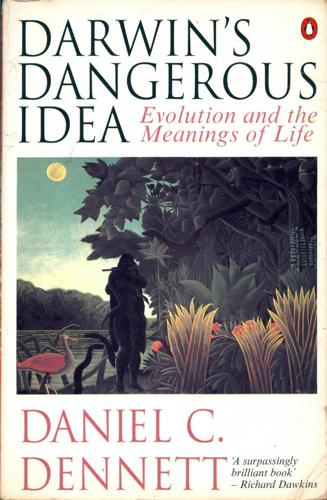
Darwin's Dangerous Idea: Evolution and the Meanings of Life
by
Daniel C. Dennett
Published 15 Jan 1995
In physics, order or organization can be measured in terms of heat differences between regions of space time; entropy is simply disorder, the opposite of order, and according to the Second Law, the entropy of any isolated system increases with time. In other words, things run down, inevitably. According to the {69} Second Law, the universe is unwinding out of a more ordered state into the ultimately disordered state known as the heat death of the universe.2 What, then, are living things? They are things that defy this crumbling into dust, at least for a while, by not being isolated — by taking in from their environment the wherewithal to keep life and limb together. The psychologist Richard Gregory summarizes the idea crisply: Time's arrow given by Entropy — the loss of organization, or loss of temperature differences — is statistical and it is subject to local small-scale reversals.
…
Only in this sense: if they were formed, they'd be stable. But whether or not any conspiracy of events could lead to their being formed is another matter, to be addressed in terms of accessibility from one location or another. Most of the genomes in this set of stable possibilities will never be formed, we can be sure, since the heat death of the universe will overtake the building process before it has made a sizable dent in the space. Two other objections to this proposal about biological possibility cry out to be heard. First, isn't it outrageously "gene-centered," in anchoring all considerations of biological possibility to the accessibility of one genome or another in the Library of Mendel?
…
In fact, as we shall see in more detail in chapter 15, we can be certain that there are realms of no doubt fascinating and important knowledge that our species, in its actual finitude, will never enter, not because we will butt our heads against some stone wall of utter incomprehension, but because the Heat Death of the universe will overtake us before we can get there. This is not, however, a limitation due to the frailty of our animal brains, a dictate of "naturalism." On the contrary, a proper application of Darwinian thinking suggests that if we survive our current self-induced environmental crises, our capacity to comprehend will continue to grow by increments that are now incomprehensible to us.
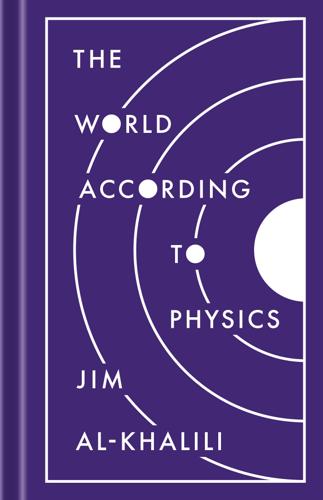
The World According to Physics
by
Jim Al-Khalili
Published 10 Mar 2020
So, rather than the cumulative gravitational attraction of all the matter in the universe—both normal and dark matter—slowing down the expansion of the universe, something else was at work, making it expand more quickly now than it did in the past. This mysterious repulsive substance acting against gravity and stretching space ever more quickly became known as dark energy. According to our present understanding, dark energy may ultimately result in what is called the ‘heat death’ of the universe many billions of years from now as space continues to expand ever more rapidly and to cool as it settles towards a state of thermodynamic equilibrium. But until we truly understand the nature of dark energy, and indeed the properties of the very early universe (see the next section), we should not be too quick to conjecture about its final fate.

Forever Free
by
Joe Haldeman
Published 14 Oct 2000
But they'll all probably find some food before they're reduced to eating one another." It looked at Marygay and me. "You two are special, since nobody else remembers as far back as you do. It amused me to construct your situation. "But to me, time is like a table, or a floor. I can walk back to the Big Bang, or forward to the heat death of the universe. Life and death are reversible conditions. Trivial ones, to me. As you have seen here." I shouldn't have said it, but I did. "So now it amuses you to let us live?" "That's one way to put it. Or you could say I'm leaving the experiment to cook on its own. I'll walk forward a million years and see what happens."
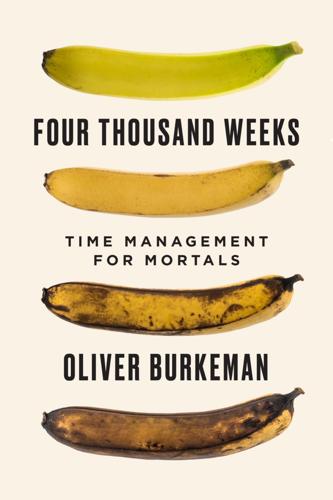
Four Thousand Weeks: Time Management for Mortals
by
Oliver Burkeman
Published 9 Aug 2021
In the contemporary version, Sisyphus would empty his inbox, lean back, and take a deep breath, before hearing a familiar ping: “You have new messages…” It gets worse, though, because here the goalpost-shifting effect kicks in: every time you reply to an email, there’s a good chance of provoking a reply to that email, which itself may require another reply, and so on and so on, until the heat death of the universe. At the same time, you’ll become known as someone who responds promptly to email, so more people will consider it worth their while to message you to begin with. (By contrast, negligent emailers frequently find that forgetting to reply ends up saving them time: people find alternative solutions to the problems they were nagging you to solve, or the looming crisis they were emailing about never materializes.)
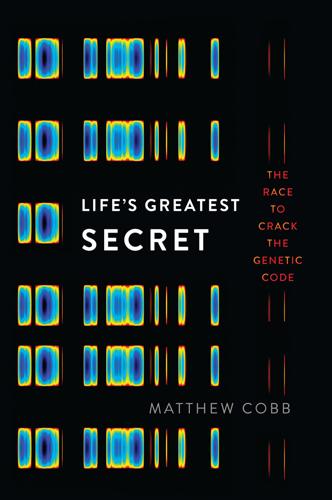
Life's Greatest Secret: The Race to Crack the Genetic Code
by
Matthew Cobb
Published 6 Jul 2015
This apparent breach of one of the fundamental laws of the Universe does not cause any problems for physics, because on a cosmological scale our existence is so brief, our physical dimensions so minute, that the iron reality of the second law does not flutter for an instant. Whether life exists or not, entropy increases inexorably. According to our current models, this will continue until the ultimate heat death of the Universe, when all matter will be evenly spaced and nothing happens, and it carries on not happening forever. Schrödinger encountered far greater difficulties when he came to discuss his second topic: the nature of heredity. Like Koltsov and Delbrück before him, Schrödinger was struck by the fact that the chromosomes are accurately duplicated during ordinary cell division (‘mitosis’ – this is the way in which an organism grows) and during the creation of the sex cells (‘meiosis’).
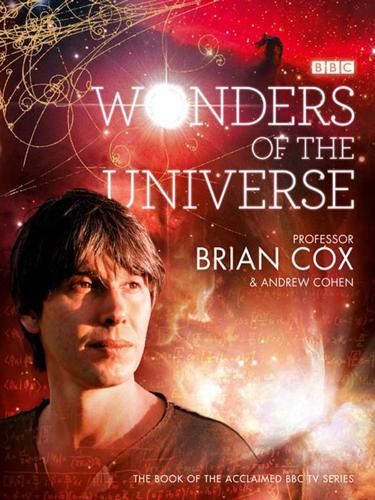
Wonders of the Universe
by
Brian Cox
and
Andrew Cohen
Published 12 Jul 2011
Once the last remnants of the last stars have decayed away to nothing and everything reaches the same temperature, the story of our universe will finally come to an end. For the first time in its life the Universe will be permanent and unchanging. Entropy finally stops increasing because the cosmos cannot get any more disorganised. Nothing happens, and it keeps not happening forever. This is known as the heat death of the Universe, an era when the cosmos will remain vast, cold, desolate and unchanging for the rest of time. There’s no way of measuring the passing of time, because nothing in the cosmos changes. Nothing changes because there are no temperature differences, and therefore no way of moving energy around to make anything happen.

Scotland’s Jesus: The Only Officially Non-Racist Comedian
by
Frankie Boyle
Published 23 Oct 2013
Maybe atheists were created by God to bore us into accepting his love. I wish for a world in which the concept of religion doesn’t even exist. I think this is finite, your life, that’s all there is. That the human experience is finite, that everything will die, that there will be complete heat death of the universe and then nothing. It’s a hard thing to accept but when you do it makes every moment so much more vital to enjoy. I think it would be better to forget our civilised attempts to process death and embrace the brutal reality. I think people should accept death more, even the ultimate death of everything.
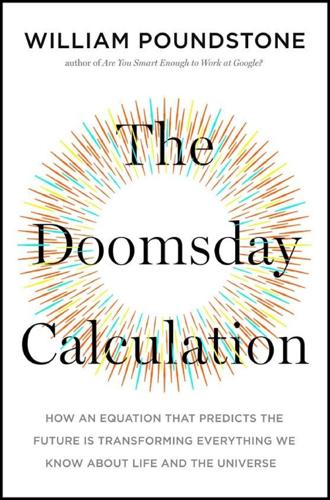
The Doomsday Calculation: How an Equation That Predicts the Future Is Transforming Everything We Know About Life and the Universe
by
William Poundstone
Published 3 Jun 2019
Here Carter was alluding to Dyson’s concept of “eternal intelligence.” In a speculative 1979 paper, “Time Without End: Physics and Biology in an Open Universe,” Dyson outlined a way in which intelligent life might conceivably evade entropy and survive forever, past the last flickering of stars and the heat death of the universe. Technologically adept observers might be able to reengineer themselves so that they could experience a subjective eternity, even as the universe cooled off to absolute zero. The result would be “a universe growing without limit in richness and complexity, a universe of life surviving forever.”
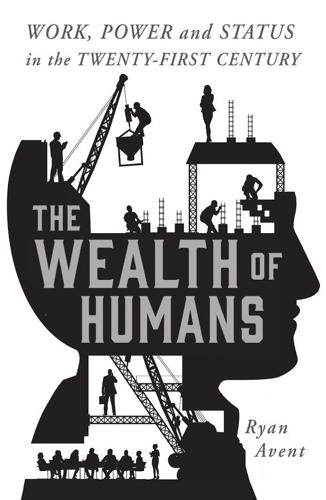
The Wealth of Humans: Work, Power, and Status in the Twenty-First Century
by
Ryan Avent
Published 20 Sep 2016
Freed from material shackles, the citizens of the Federation are able to elevate themselves, to enjoy the finer and nobler things in life, and indeed to boldly go where no man or woman has gone before.1 Humanity might eventually arrive at such a place, where abundance is nearly endless and only the heat death of the universe threatens our good-natured fun. Sadly, that is unlikely to be a concern for those of us alive now. As rapid as the pace of technological progress has been, we are still creatures bound firmly by scarcity. In our world, technology will often be freeing, but the allocation of resources will continue to matter, and in many cases technological progress will only be as liberating as the organization of society allows it to be.

Work! Consume! Die!
by
Frankie Boyle
Published 12 Oct 2011
Later on, when I’m swimming, I think about that and whether laughing at something horrible just makes it bearable, and helps it continue. Maybe there is a laziness in laughing about stuff instead of doing something about it. I decide jokes should only be about things you canny change, only about disabilities and death and human fallibility and the eventual heat death of the universe. I’m in a Jacuzzi thinking this. Anyway, the wee prick is not getting on the PlayStation again. It’s fucking snakes and ladders from now on. Gary O’Donnell, Facebook assassin, has been texting me in the belief that I am Amanda H. I’ve been fending him off and also, let’s be honest, leading him on.

What We Cannot Know: Explorations at the Edge of Knowledge
by
Marcus Du Sautoy
Published 18 May 2016
But if the universe has lost any sense of scale, then couldn’t the conditions at the end of our universe be the starting point for a new Big Bang, so that the universe that emerges has rescaled to concentrate the energy into a new beginning? These two scenarios – the universe ending in a boring heat death and the universe starting in an exciting Big Bang – can actually be seamlessly fused together, like two landscapes whose boundaries match up to create one continuous landscape. The sewing together of these scenarios requires that the end of one universe contracts and the beginning of the next expands, so that the two ends fit together, smoothly passing from one to the other.
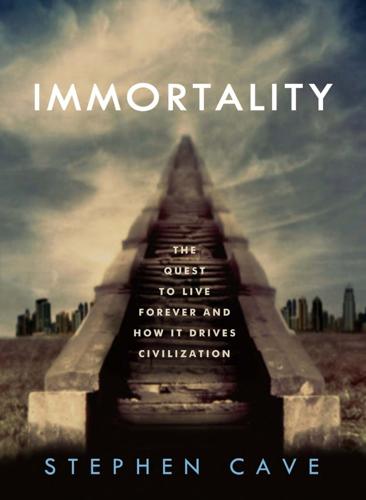
Immortality: The Quest to Live Forever and How It Drives Civilization
by
Stephen Cave
Published 2 Apr 2012
If, for example, one of Linus Pauling’s successors formulates a medical elixir that could stave off aging indefinitely, they would not thereby make us immune to death in all its forms. So-called medical immortals could always hope to live to the next year or decade or century, yet the Reaper’s scythe would still be hovering. Given all the things that could go wrong, from a piano falling on their head to the heat death of the universe, the medical immortals would not therefore be faced with a truly infinite future. They might have a challenging time planning their lives, not knowing if those lives would last fifty years or fifty thousand, but it would not be impossible. The situation of what we might call a “true immortal” who cannot die would be quite different.

Scratch Monkey
by
Stross, Charles
Published 1 Jan 2011
The losers will be suspended, NP-static: the number of processors available to them drops below a critical level, they can't get enough connections, can't run in anything like real time, can't even complete a thought. The fate of an NP-static Dreamtime is to be sent on a one-way trip into the distant future, a long but subjectively rapid journey into the heat-death of the universe -- unless somebody physically reboots the world, consigning its frozen inhabitants to oblivion. The Ultrabrights collectively face this dilemma: they are confined to the systems at the centre of known space. They will die unless they can find a way to break out of the trap, side-step their confinement and establish a line of communication with the twilight zone beyond.
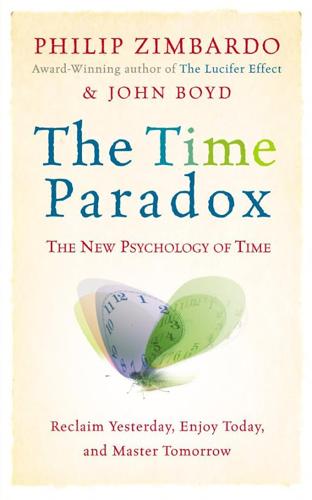
Time Paradox
by
Philip G. Zimbardo
and
John Boyd
Published 1 Jan 2008
In short, machines and invertebrates prove that it doesn’t take a smart, self-aware, conscious brain to make simple predictions about the future. The second thing to notice is that predictions such as these are not particularly far-reaching. They are not predictions in the same sense that we might predict the annual rate of inflation, the intellectual impact of postmodernism, the heat death of the universe, or Madonna’s next hair color. Rather, these are predictions about what will happen in precisely this spot, precisely next, to precisely me, and we call them predictions only because there is no better word for them in the English language. But the use of that term—with its inescapable connotations of calculated, thoughtful reflection about events that may occur anywhere, to anyone, at any time—risks obscuring the fact that brains are continuously making predictions about the immediate, local, personal future of their owners without their owners’ awareness.
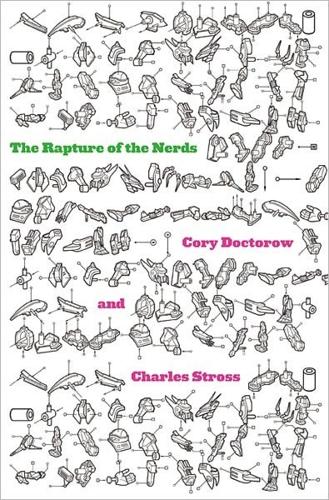
The Rapture of the Nerds
by
Cory Doctorow
and
Charles Stross
Published 3 Sep 2012
They want to destroy the Earth, and everyone’s relying on you to stop them. Personally, I think that’s a forlorn hope, but under the circumstances, extreme measures seemed justifiable in order to get your fucking attention. Now will you listen to me?” * * * Hyperspace bypasses, Vogon poetry, the heat death of the universe: none of these things feature in the extraordinary situation now pertaining to the end of the world as Huw knows it. “I’m going to take you to meet somebody,” her mum tells her, bossily overreaching as ever. “They’ll set you straight.” “Who?” Huw stubbornly clutches her ax. “The defense—the people who asked me to fetch you.

The Knowledge Machine: How Irrationality Created Modern Science
by
Michael Strevens
Published 12 Oct 2020
Thomson was a prodigy: born in Belfast in 1824, he published three scientific papers while still in school and at the age of 22 was appointed a professor at the University of Glasgow, where he remained his entire life. He made important discoveries in the new sciences of energy and heat and pioneered the notion of the heat death of the universe—the inevitable dispersion of energy that would result in the world’s becoming a quiet, dark, homogeneous, and lifeless place in which everything was at the same temperature and nothing more could happen. Turning to engineering and commerce, he joined the effort to lay an undersea telegraph cable between Britain and the United States; after years of accidents and false starts, the connection was made in 1866 and Thomson was knighted for his contributions.
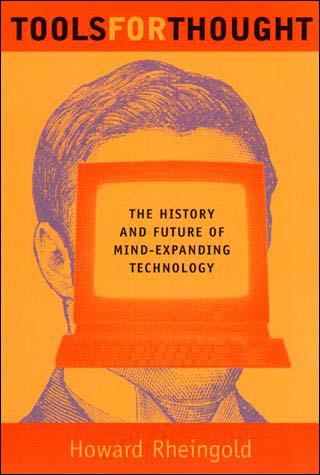
Tools for Thought: The History and Future of Mind-Expanding Technology
by
Howard Rheingold
Published 14 May 2000
It is a universal tendency that is as true for the energy transactions of the stars in the sky as it is for the tea kettle on the stove. Because the universe is presumed to be a closed system, and since Clausius demonstrated that the entropy of such systems tends to increase with the passage of time, the gloomy prediction of a distant but inevitable "heat death of the universe" was a disturbing implication of the second law of thermodynamics. "Heat death" was what they called it because heat is the most entropic form of energy. But the gloomy news about the end of time wasn't the only implication of the entropy concept. When it was discovered that heat is a measure of the average motion of a population of molecules, the notion of entropy became linked to the measure of order or disorder in a system.

Arriving Today: From Factory to Front Door -- Why Everything Has Changed About How and What We Buy
by
Christopher Mims
Published 13 Sep 2021
And yet the algorithms deciding how to optimize the path of the USB charger to the consumer must make a decision quickly. They must, in the language of psychology, be satisficers rather than optimizers—choosing a good enough solution rather than the absolute best. Even in a hypothetical scenario in which we can stop time and run this computation until the heat death of the universe, the best solution for this item must be balanced against the operation of the entire system—every robot and machine in the warehouse can’t just drop everything to prioritize a single order. Any delivery or routing algorithm must also build some flexibility into the travel itinerary of an item, because there’s plenty it can’t predict about the next twenty-four to thirty-six hours.
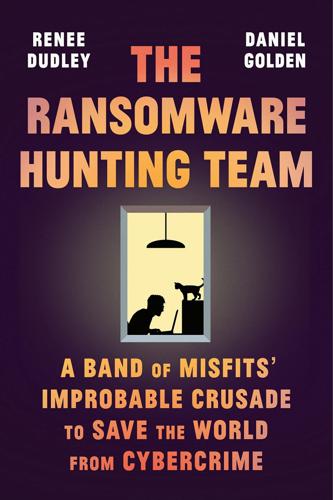
The Ransomware Hunting Team: A Band of Misfits' Improbable Crusade to Save the World From Cybercrime
by
Renee Dudley
and
Daniel Golden
Published 24 Oct 2022
“That’s not feasible,” Fabian replied. Impressed that the young American who contacted him out of the blue seemed “genuinely interested in the subject material,” Fabian confirmed what Michael suspected: without a trace of the ransomware, recovery was hopeless. The encryption key was too long. “It would have taken until the heat death of the universe,” Fabian told Michael. Brian’s sister never got her photos back. For Michael, the failure was a sobering lesson in how much he had to learn: “I hadn’t started my journey toward reverse engineering,” he said. “I was completely relying on Fabian.” But it also marked a turning point in Michael’s life and was his first taste of what lay ahead.
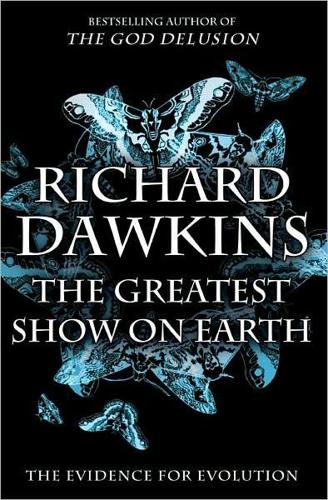
The Greatest Show on Earth: The Evidence for Evolution
by
Richard Dawkins
Published 21 Sep 2009
Inevitably, some of this energy is wasted as heat – if it were not, we’d have a perpetual motion machine, which is (you can’t say it too often) impossible. Almost all the energy in the universe is steadily being degraded from forms that are capable of doing work to forms that are incapable of doing work. There is a levelling off, a mixing up, until eventually the entire universe will settle into a uniform, (literally) uneventful ‘heat death’. But while the universe as a whole is hurtling downhill towards its inevitable heat death, there is scope for small quantities of energy to drive little local systems in the opposite direction. Water from the sea is lifted into the air as clouds, which later deposit their water on mountaintops, from which it runs downhill in streams and rivers, which can drive water wheels or electric power stations.
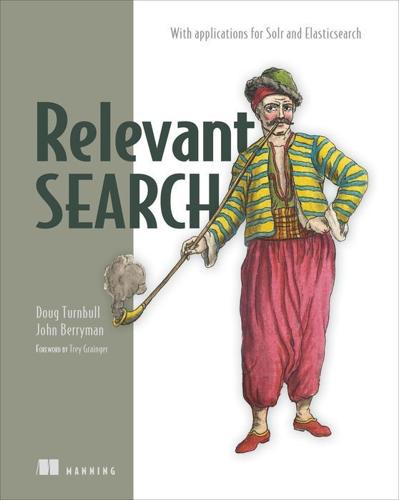
Relevant Search: With Examples Using Elasticsearch and Solr
by
Doug Turnbull
and
John Berryman
Published 30 Apr 2016
You directly placed the source data model into Elasticsearch. Shouldn’t you have done some signal modeling? If you use this data directly to create a search index, won’t you end up with relevance problems? Well, yes, but that’s for a good reason. Search is a place ripe for premature optimization. You’re likely to reach the heat death of the universe before achieving a perfect search solution in every direction. You know there will be relevance problems, but you don’t quite know what those are until you experiment with user searches. There are few areas that emphasize “fail fast” as much as search relevance. Load your data, get something basic working, find where it’s broken, reconfigure, reindex if need be, requery, rinse, and repeat.

Giving the Devil His Due: Reflections of a Scientific Humanist
by
Michael Shermer
Published 8 Apr 2020
It is a mistake made by theologians when arguing that without a source external to our world to vouchsafe morality and meaning nothing really matters. One of the most prominent theologians of our time, William Lane Craig, committed Alvy’s Error in a 2009 debate at Columbia University with the Yale philosopher Shelly Kagan when he pronounced: On a naturalistic worldview everything is ultimately destined to destruction in the heat-death of the universe. As the universe expands it grows colder and colder as its energy is used up. Eventually all the stars will burn out, all matter will collapse into dead stars and black holes, there will be no life, no heat, no light, only the corpses of dead stars and galaxies expanding into endless darkness.
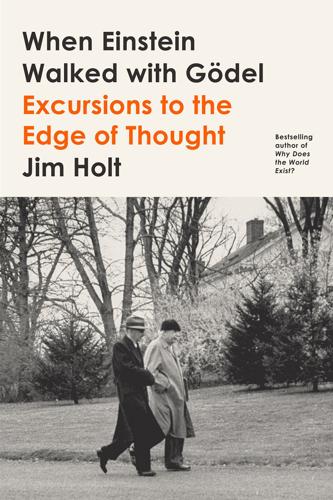
When Einstein Walked With Gödel: Excursions to the Edge of Thought
by
Jim Holt
Published 14 May 2018
For all the fascinating theories and scenarios they spin out, practitioners of cosmic eschatology are in a position very much like that of Hollywood studio heads: nobody knows anything. Still, little Alvy Singer is in good company in being soul-sick over the fate of the cosmos, however vaguely it is descried. At the end of the nineteenth century, figures like Swinburne and Henry Adams expressed similar anguish at what then seemed to be the certain heat death of the universe from entropy. In 1903, Bertrand Russell described his “unyielding despair” at the thought that “all the labors of the ages, all the devotion, all the inspiration, all the noonday brightness of human genius, are destined to extinction in the vast death of the solar system, and that the whole temple of Man’s achievement must inevitably be buried beneath the debris of a universe in ruins.”
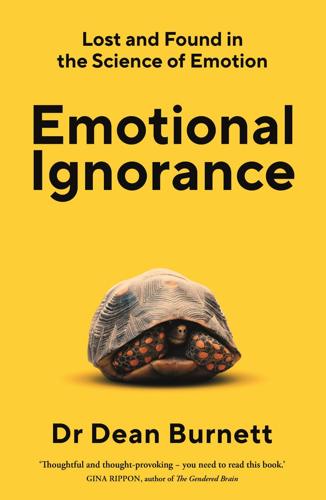
Emotional Ignorance: Lost and Found in the Science of Emotion
by
Dean Burnett
Published 10 Jan 2023
Emotions may play a part, but presumably those who plumb the depths of the cosmos for answers are far more reliant on cognition than emotion. But then Dr Mack said this: In the course of researching my own book, I spoke to a bunch of different cosmologists. And I always asked ‘How does the end of the universe make you feel?’ The idea that there will be a ‘heat death’ of the universe, that everything fades to black, many found that really depressing. Some even said ‘I just don’t believe it’s going to be like that’, and have since produced their own alternative theories and ideas now, because they simply do not like the idea that the universe is going to fade away and die.

Possible Minds: Twenty-Five Ways of Looking at AI
by
John Brockman
Published 19 Feb 2019
His name was Eliezer Yudkowsky, and we spent the next four hours discussing the message he had for the world—a message that had brought me to that eatery and would end up dominating my subsequent work. THE FIRST MESSAGE: THE SOVIET OCCUPATION In The Human Use of Human Beings, Norbert Wiener looked at the world through the lens of communication. He saw a universe that was marching to the tune of the second law of thermodynamics toward its inevitable heat death. In such a universe, the only (meta)stable entities are messages—patterns of information that propagate through time, like waves propagating across the surface of a lake. Even we humans can be considered messages, because the atoms in our bodies are too fleeting to attach our identities to. Instead, we are the “message” that our bodily functions maintain.

The Milky Way: An Autobiography of Our Galaxy
by
Moiya McTier
Published 14 Aug 2022
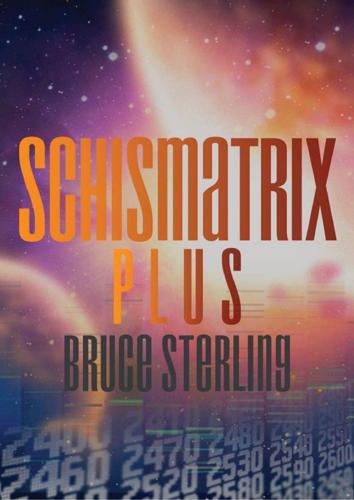
Schismatrix Plus
by
Bruce Sterling
Published 1 Jan 1995
Origins and destinies, predictions and memories, lives and deaths, I sidestep those. I’m too slick for time to grip, you get me, sundog?” “What do you want then, Presence?” “I want what I already have! Eternal wonder, eternally fulfilled.… Not the eternal, even, just the Indefinite, that’s where all beauty is.… I’ll wait out the heat-death of the Universe to see what happens next! And in the meantime, isn’t it something, all of it?” “Yes,” Lindsay said. His heart was hammering in his chest. His robot nurse reached for him with a needle-load of soothing chemicals; he turned it off, then laughed and stretched. “It’s all very much something.”

Data and Goliath: The Hidden Battles to Collect Your Data and Control Your World
by
Bruce Schneier
Published 2 Mar 2015
A 65-bit key would take the same attacker twice the amount of time to break, or two days. And a 128-bit key—which is at most twice the work to use for encryption—would take the same attacker 264 times longer, or one million billion years to break. (For comparison, Earth is 4.5 billion years old.) This is why you hear statements like “This can’t be broken before the heat death of the universe, even if you assume the attacker builds a giant computer using all the atoms of the planet.” The weird thing is that those are not exaggerations. They’re just effects of the mathematical imbalance between encrypting and breaking. At least, that’s the theory. The problem is that encryption is just a bunch of math, and math has no agency.

Algorithms to Live By: The Computer Science of Human Decisions
by
Brian Christian
and
Tom Griffiths
Published 4 Apr 2016
By taking roughly that many attempts, sooner or later we are bound to start with a shuffled deck that is in fact completely sorted by chance. At that point we can proudly enter Christian-Griffiths into The Guinness Book alongside a not-too-shabby sort time of 0m00s. To be fair, we’d almost certainly be trying until the heat death of the universe before we got our perfect record attempt. Nonetheless, this highlights the biggest fundamental difference between record keepers and computer scientists. The fine folks at Guinness care only about best-case performance (and beer). They’re hardly blameworthy, of course: all records in sports reflect the single best performance.
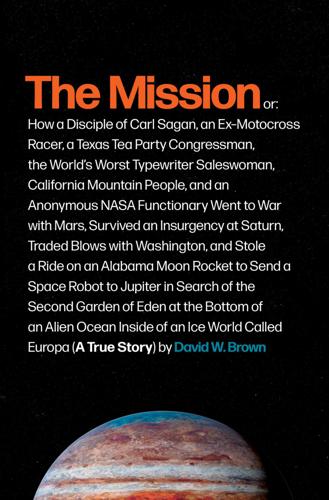
The Mission: A True Story
by
David W. Brown
Published 26 Jan 2021
NASA as an institution seems criminally incapable of preserving its hyperlinks, and thus hell-bent on burying the extraordinary digital record of its missions and activities. Searching the website of the European Space Agency, on the other hand, is like strapping on a time machine. Its gloriously maintained hyperlinks will survive the heat death of the universe. 48.NASA, JHUAPL, and Carnegie Institution of Washington, Twins Image (spacecraft image), NASA Image and Video Library, last modified August 2, 2005, https://images.nasa.gov/details-PIA10122.html. 49.NASA, JHUAPL, and Carnegie Institution of Washington, Galapagos Islands (spacecraft image), NASA Image and Video Library, last modified August 2, 2005, https://images.nasa.gov/details-PIA10121.html. 50.L.

Animal Spirits: The American Pursuit of Vitality From Camp Meeting to Wall Street
by
Jackson Lears
While he prepared his influential paper on the dissipation of energy, in the 1850s, Thomson recorded his developing conception: I believe the tendency in the material world is for motion to become diffused, and that as a whole the reverse of concentration is gradually going on—I believe that no physical action can ever restore the heat emitted from the Sun, and that this source is not inexhaustible; also that the motions of the Earth and other planets are losing vis viva which is converted into heat; and that although some vis viva may be restored for instance to the earth by heat received from the sun, or by other means, that the loss cannot be precisely compensated and I think it probable that it is under-compensated. For Thomson, the dissipation of energy suggested the eventual “heat death” of the universe—a prospect consistent with his theological conviction that the universe had a beginning and an end. God set it in motion, and will allow it to run down. This was a far cry from his defense of a “vital principle” a half century later, after he had become Lord Kelvin, but the young Thomson still inhabited a world where orthodox Christianity depended on faith in divine creation.

Velocity Weapon
by
Megan E. O'Keefe
Published 10 Jun 2019
The Earth would die, eventually. It would be humanity’s choice if they happened to be bound to it when that happened. She would be prepared. Would know how to craft everything they’d ever need out of the dust between the stars. It wasn’t deforestation that kept Lex up at night. It was the heat death of the universe. “A refining team found it at the Elequatorial processing facility. They didn’t see it, mind you. Just noted an anomaly and sent it to us for further investigation.” Salvez was dodging. A word, a word she did not want to say, thickened the air in the hallway as they passed through layer upon onion layer of security.
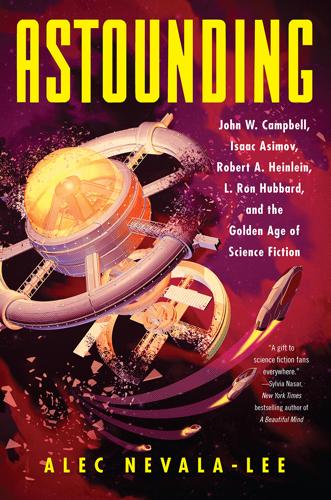
Astounding: John W. Campbell, Isaac Asimov, Robert A. Heinlein, L. Ron Hubbard, and the Golden Age of Science Fiction
by
Alec Nevala-Lee
Published 22 Oct 2018
His own legacy rested on his achievements of twenty years before, which was not the ending that he would have wanted—but he never ceased to believe in its importance. In a conversation a few months before his death, Campbell had stretched his arms wide: “This is science fiction. It takes in all time, from before the universe was born, through the formation of suns and planets, on through their destruction and forward to the heat death of the universe, and after.” Then he put his hands an inch apart. “This is English literature—the most microscopic fraction of the whole.” His final editorial, on quasars, appeared in the December 1971 issue. It ended, “You know—things can go into a black hole, but nothing ever comes out. All roads lead to it only.”
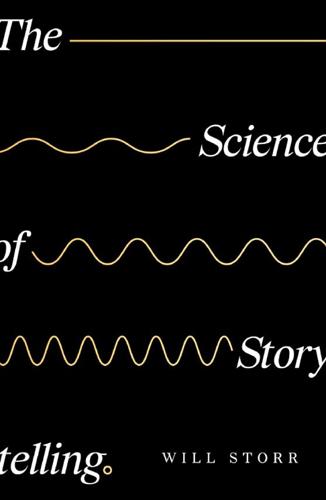
The Science of Storytelling: Why Stories Make Us Human, and How to Tell Them Better
by
Will Storr
Published 3 Apr 2019
1.1 Moments of change; the control-seeking brain 1.2 Curiosity 1.3 The model-making brain; how we read; grammar; filmic word order; simplicity; active versus passive language; specific detail; show-not-tell 1.4 World-making in fantasy and science fiction 1.5 The domesticated brain; theory of mind in animism and religion; how theory-of-mind mistakes create drama 1.6 Salience; creating tension with detail 1.7 Neural models; poetry; metaphor 1.8 Cause and effect; literary versus mass-market storytelling 1.9 Change is not enough CHAPTER TWO: THE FLAWED SELF 2.0 The flawed self; the theory of control 2.1 Personality and plot 2.2 Personality and setting 2.3 Personality and point of view 2.4 Culture and character; Western versus Eastern story 2.5 Anatomy of a flawed self; the ignition point 2.6 Fictional memories; moral delusions; antagonists and moral idealism; antagonists and toxic self-esteem; the hero-maker narrative 2.7 David and Goliath 2.8 How flawed characters create meaning CHAPTER THREE: THE DRAMATIC QUESTION 3.0 Confabulation and the deluded character; the dramatic question 3.1 Multiple selves; the three-dimensional character 3.2 The two levels of story; how subconscious character struggle creates plot 3.3 Modernist stories 3.4 Wanting and needing 3.5 Dialogue 3.6 The roots of the dramatic question; social emotions; heroes and villains; moral outrage 3.7 Status play 3.8 King Lear; humiliation 3.9 Stories as tribal propaganda 3.10 Antiheroes; empathy 3.11 Origin damage CHAPTER FOUR: PLOTS, ENDINGS AND MEANING 4.0 Goal directedness; video games; personal projects; eudaemonia; plots 4.1 Plot as recipe versus plot as symphony of change 4.2 The final battle 4.3 Endings; control; the God moment 4.4 Story as a simulacrum of consciousness; transportation 4.5 The power of story 4.6 The lesson of story 4.7 The consolation of story APPENDIX: THE SACRED FLAW APPROACH A NOTE ON THE TEXT ACKNOWLEDGMENTS NOTES AND SOURCES INDEX ABOUT THE AUTHOR ALSO BY WILL STORR ABOUT THE PUBLISHER INTRODUCTION We know how this ends. You’re going to die and so will everyone you love. And then there will be heat death. All the change in the universe will cease, the stars will die, and there’ll be nothing left of anything but infinite, dead, freezing void. Human life, in all its noise and hubris, will be rendered meaningless for eternity. But that’s not how we live our lives. Humans might be in unique possession of the knowledge that our existence is essentially meaningless, but we carry on as if in ignorance of it.

From eternity to here: the quest for the ultimate theory of time
by
Sean M. Carroll
Published 15 Jan 2010
Our universe is a lively place because there is plenty of room for entropy to increase before we hit equilibrium and everything grinds to a halt. It’s not a foregone conclusion—entropy might be able to simply grow forever. Alternatively, entropy may reach a maximum value and stop. This scenario is known as the “heat death” of the universe and was contemplated as long ago as the 1850s, amidst all the exciting theoretical developments in thermodynamics. William Thomson, Lord Kelvin, was a British physicist and engineer who played an important role in laying the first transatlantic telegraph cable. But in his more reflective moments, he mused on the future of the universe: The result would inevitably be a state of universal rest and death, if the universe were finite and left to obey existing laws.
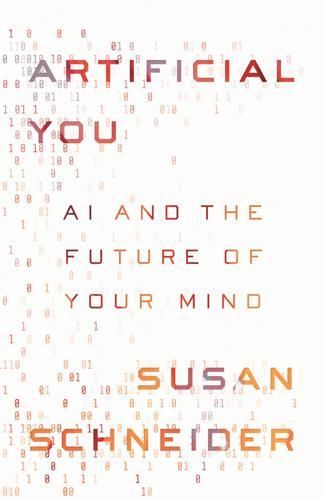
Artificial You: AI and the Future of Your Mind
by
Susan Schneider
Published 1 Oct 2019

Exploring the World of Lucid Dreaming
by
Stephen Laberge, Phd
and
Howard Rheingold
Published 8 Feb 2015

On the Edge: The Art of Risking Everything
by
Nate Silver
Published 12 Aug 2024
Pascal’s Mugging: Introduced by Eliezer Yudkowsky, a counterpart to Pascal’s Wager, wherein you’re asked to make a sacrifice to avoid some small and implausible probability of a catastrophic outcome—for instance, a mugger who says you should give him five dollars or otherwise there’s a chance he’ll trigger a chain reaction in a particle accelerator that will lead to the heat death of the universe. It is an example of the potential shortcomings of utilitarian reasoning when applied to everyday problems. Pascal’s Wager: The French mathematician Blaise Pascal’s famous “wager” in which he contended that you should believe in God because if there’s even a small chance that God is real, you’ll get an infinite benefit (ascending to Heaven for eternity) by doing so.
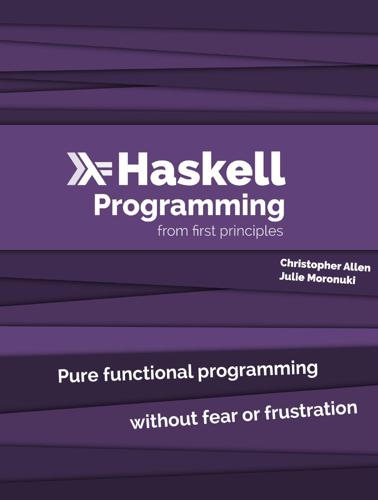
Haskell Programming: From First Principles
by
Christopher Allen
and
Julie Moronuki
Published 1 Jan 2015
This is going to be vanishingly unlikely to happen unless you’ve suddenly become a very popular URI shortening service, but it’d prevent the loss of any data. Your exercise is to devise some means of making this less likely. The easiest way would be to simply make the short codes long enough that you’d need to run a computer until the heat death of the universe to get a collision, but you should try throwing an error in the first handler we showed you first. 19.7 That’s a wrap! We hope this chapter gave you some idea of how Haskellers use the typeclasses we’ve been talking about in real code, to handle various types of problems. In the next two chapters, we’ll be looking at Foldable and Traversable, two typeclasses with some interesting properties that rely on these four algebraic structures (monoid, functor, applicative, and monad), so we encourage you to take some time to explore some of the uses we’ve demonstrated here.
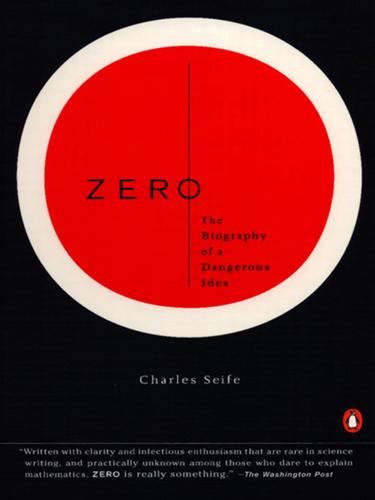
Zero: The Biography of a Dangerous Idea
by
Charles Seife
Published 31 Aug 2000
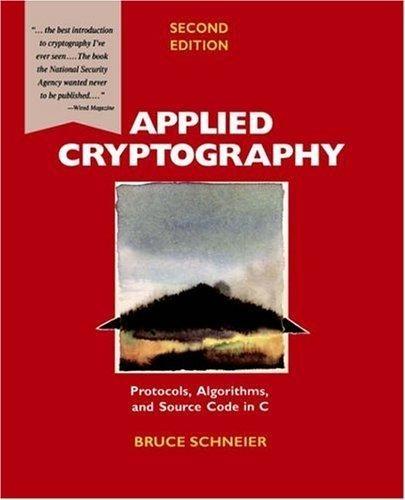
Applied Cryptography: Protocols, Algorithms, and Source Code in C
by
Bruce Schneier
Published 10 Nov 1993
As a general rule, diffusion alone is easily cracked (although double transposition ciphers hold up better than many other pencil-and-paper systems). 11.2 Complexity Theory Complexity theory provides a methodology for analyzing the computational complexity of different cryptographic techniques and algorithms. It compares cryptographic algorithms and techniques and determines their security. Information theory tells us that all cryptographic algorithms (except one-time pads) can be broken. Complexity theory tells us whether they can be broken before the heat death of the universe. Previous Table of Contents Next Products | Contact Us | About Us | Privacy | Ad Info | Home Use of this site is subject to certain Terms & Conditions, Copyright © 1996-2000 EarthWeb Inc. All rights reserved. Reproduction whole or in part in any form or medium without express written permission of EarthWeb is prohibited.
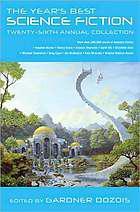
The Year's Best Science Fiction: Twenty-Sixth Annual Collection
by
Gardner Dozois
Published 23 Jun 2009
‘Every particle will be so far from everything else that it will be in a universe of its own. It will be a universe of its own.’ ‘Like I said, it’s a theory. Yemoa, your parents . . .’ ‘You use this as a space drive.’ ‘Your matter/anti-matter system obeys the laws of Thermodynamics, and that’s the heat-death of the universe. We’re all getter older and colder and more and more distant. Come on, you have to come in. You must be uncomfortable in that suit.’ The Aeo Taea skinsuits looked like flimsy dance costumes to don in the empty cold of interstellar space but their hides were clever works of molecular technology, recycling and refreshing and repairing.
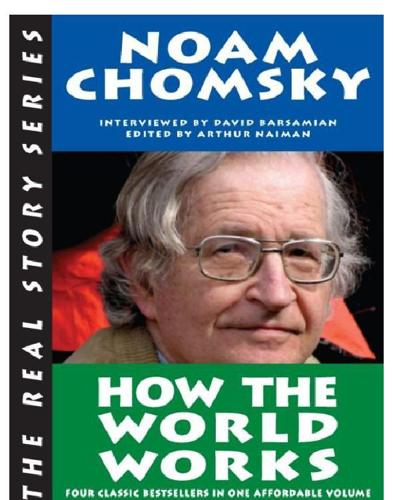
How the World Works
by
Noam Chomsky
,
Arthur Naiman
and
David Barsamian
Published 13 Sep 2011

Excession
by
Iain M. Banks
Published 14 Jan 2011
You could choose the size and therefore age of the universe you wanted to remain within, and/or visit as many as you wanted. You could, for example, head on up through older universes and attempt to access technologies perhaps beyond even this one. But just as interesting is the point that because you wouldn't be tied to one universe, one time stream, you need be involved in no heat death when the time came in your original universe; or no evaporation, or no big crunch, depending. 'It's like being on an escalator. At the moment, confined to this universe, we're stuck to this stair, this level; the possibility this artifact appears to offer is that of being able to step from one stair to another, so that before your stair on the escalator comes to the end of its travel - heat-death, big crunch, whatever you just step off one level down to another.
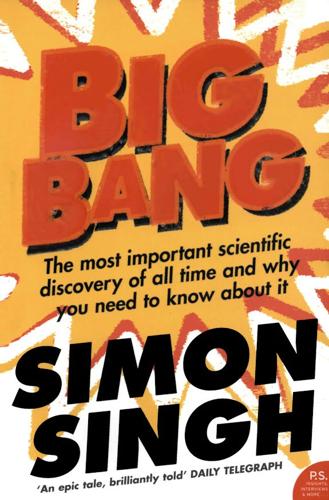
Big Bang
by
Simon Singh
Published 1 Jan 2004
Others, such as Eddington, detested this vision of a recycled universe: ‘I would feel more content that the universe should accomplish some great scheme of evolution and, having achieved whatever might be achieved, lapse back into chaotic changelessness, than that its purpose should be banalized by continual repetition.’ In other words, an ever-expanding universe will eventually become cold and barren because its stars will run out of hydrogen fuel and stop shining, and Eddington preferred this ‘Big Freeze’ (or ‘heat death’) scenario to an infinitely repetitive and tedious universe. In addition to Eddington’s subjective criticism, the rebounding Big Bang faces a range of practical problems. For example, no cosmologist has yet been able to give a full account of the forces that would be required to cause a cosmic rebound. In any case, the latest observations indicate that the universe’s expansion is accelerating, which reduces the likelihood of the current expansion turning into a contraction.
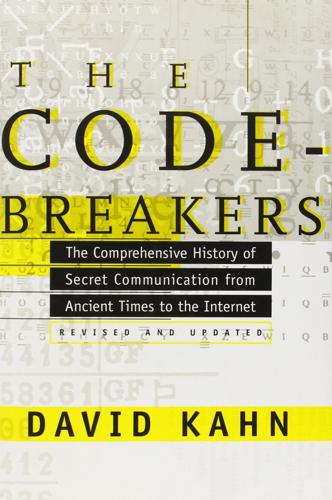
The Codebreakers: The Comprehensive History of Secret Communication From Ancient Times to the Internet
by
David Kahn
Published 1 Feb 1963
This oneway flow has given entropy the epithet of “time’s arrow,” because an increase in entropy invariably means an increase in the age of an (isolated) physical system. If this process were to continue to its end within the universe, Sir James Jeans wrote, “there would be neither sunlight nor starlight, but only a cool glow of radiation uniformly diffused through space.” This state of ultimate maximum entropy has been called the “heat-death of the universe.” Since an increase in entropy means an increase in anarchy, the language with the most entropy is the language with the greatest freedom. This is obviously a language with no rules at all to limit it. Such a language would naturally have no statistics to govern which letters would be used most often, which letters would be likely to follow a given letter, and so on.
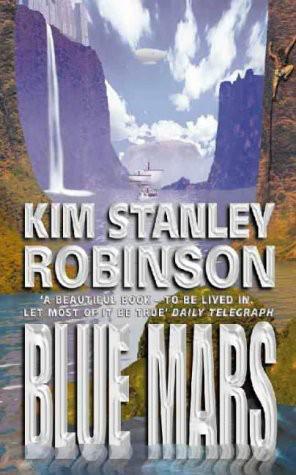
Blue Mars
by
Kim Stanley Robinson
Published 23 Oct 2010